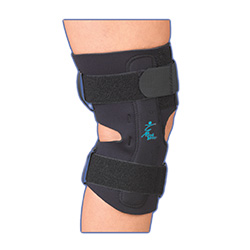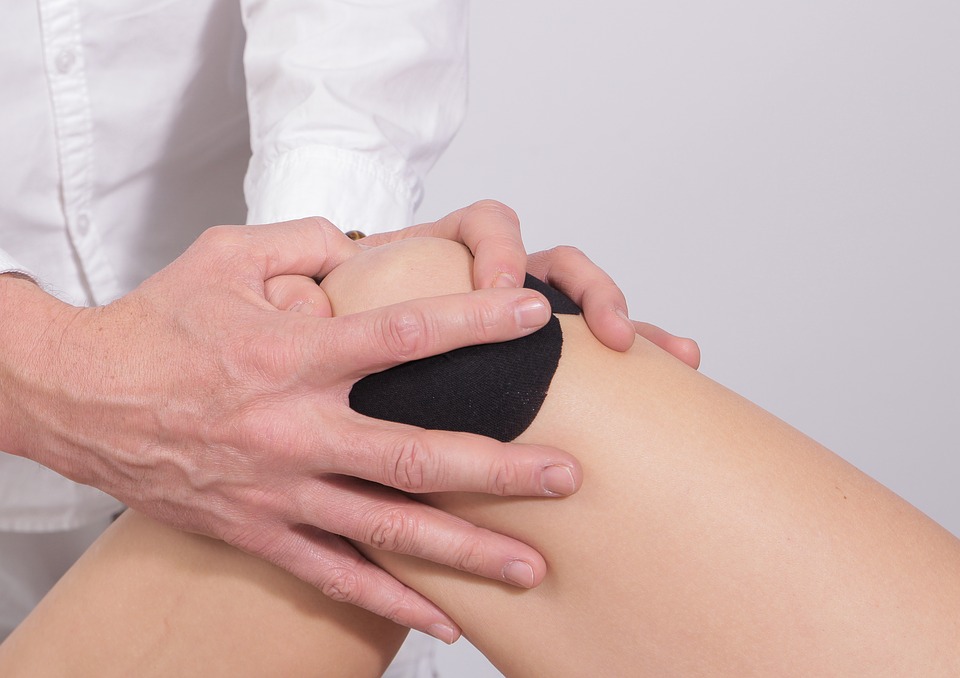ACL injuries occur typically from a non-contact force such as sudden deceleration. In these scenarios, the quick deceleration causes a forceful contraction of the quadriceps muscle, which pulls on the tibia (shin bone) causing it to dislocate anteriorly (forwards). However, these injuries can occur in traumatic fashions as well, such as a blow to the back of the knee, creating the same forceful dislocation anteriorly of the tibia, or a planted/rotational type movement.

Given the blood flow to the ACL, the majority (~72%) of tears to this ligament will result in what is called a hemarthrosis, which is a significant amount of swelling that is immediate post-injury. There may also be an audible “pop”. In certain cases, these injuries are not in isolation, and can also include injuries to the collateral ligaments on the inside and outside of the knee, or to the meniscus, a load transfer cartilage found between the long leg bones.
Treatments for Acl Injuries
The decision on whether or not these need to be repaired surgically requires a long-winded answer. As a general rule, consideration is given to age, activity level, the presence of meniscal tears, and the integrity of other surrounding ligaments.
Rehabilitation post-injury begins immediately, whether it is a surgical or non-surgical knee. The first 4-6 weeks focus on restoring range of motion, strength, and reducing inflammation and pain. The knee is very rarely immobilized, and most individuals are green-lighted to immediately either partial or full weight bear. The protocols utilized for these injuries across Canada are variable, but all incorporate similar parameters including a range of motion, flexibility, strength, balance, proprioception, agility, and both open/closed chain exercises (foot on the ground, foot not on the ground.
Risks of Acl Injuries
Unfortunately, when it comes to returning to the sport after ACL injuries, recent research is demonstrating some eye-opening trends. Only 80% of ACL reconstruction athletes return to athletic sport. Of that 80 %, only 65% of these athletes return to the same level of sport they were playing previously, with only 55% returning to sport at a competitive level within 12-24 months post injury1. What about all these professional athletes who return by the start of the next season? There are many variables at play there that make it difficult to compared ACL return to sport times for the elite athlete vs. the weekend warrior. These elite athletes have their clinical exams +/- any diagnostics (MRI), and subsequently, surgeries are done in an expedited manner. They then have a large team of medical personnel at their disposal throughout their entire rehabilitative process. They have access to facilities and equipment, as well as a wide array of modalities. They also are getting paid for their rehabilitation, and their career is often their job. For the weekend warrior, they have to pay for their rehabilitation. Often life/work gets in the way, and they may/may not have access to the facilities to aid their rehabilitative process. All of these factors can turn the recovery from 8-12 months into 18-24 months.
The overall consensus though rehabilitating ACL injuries remains, whether it is an elite-level athlete or an individual who tripped coming downstairs, is that the evaluation of certain milestone criteria throughout the process should be what dictates progression through different phases of the rehab, and will, most likely, help the individual return in the timeliest manner possible.
Stay Mobile,
Travis Gaudet MScPT., BScKin., F.C.A.M.P.T., Dip.Manip.PT., cGIMS
References:
1. Ardern, Clare L, et al. “Fifty-Five per Cent Return to Competitive Sport Following Anterior Cruciate Ligament Reconstruction Surgery: an Updated Systematic Review and Meta-Analysis Including Aspects of Physical Functioning and Contextual Factors.” British Journal of Sports Medicine, U.S. National Library of Medicine, Nov. 2014, www.ncbi.nlm.nih.gov/pubmed/25157180.
2. Canadian Physiotherapy Association – Orthopaedic Theory Manual II Notes
3. https://www.mickhughes.physio/single-post/2016/06/02/When-Can-I-Return-To-Sport-After-ACL-Surgery





